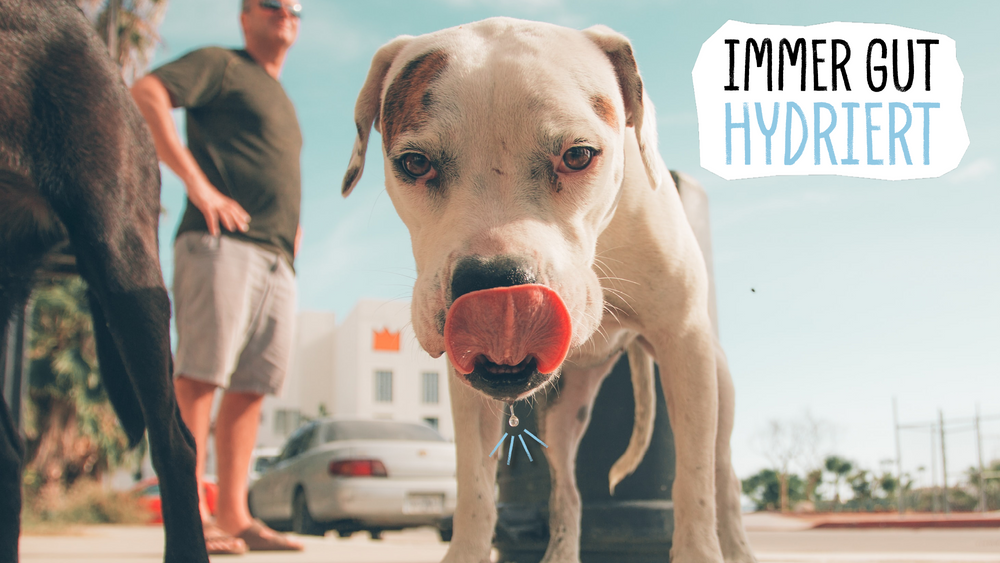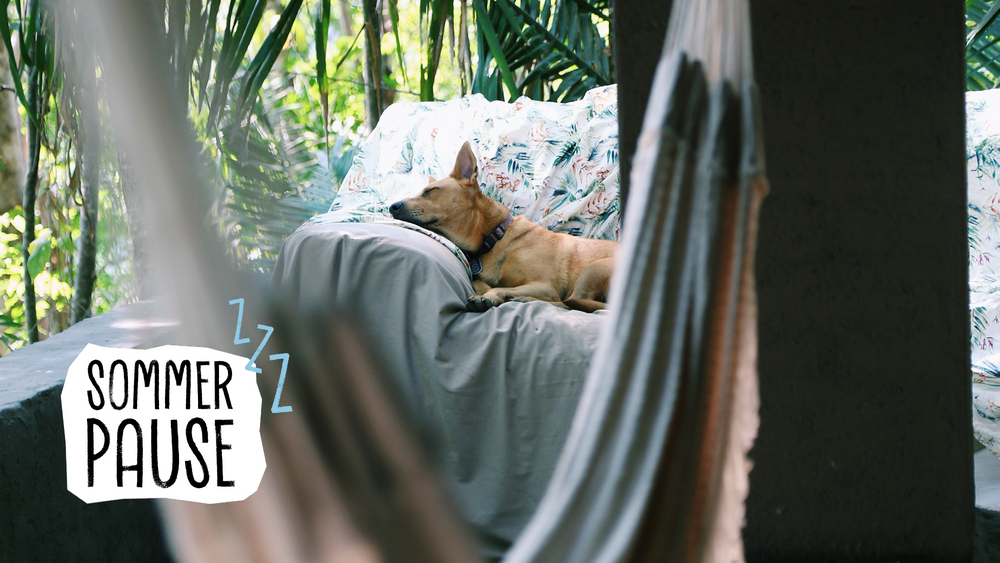
SUMMER, SUN, HOT PAWS!
 Author: Valerie Henssen
Author: Valerie Henssen
 Proofreader: Veronika Hajek
Proofreader: Veronika Hajek

We know it ourselves: walking barefoot on hot asphalt can be quite painful. We prefer to quickly put our flip-flops back on.
The hot asphalt can also mean excruciating pain for our four-legged friends. Pay particular attention to symptoms such as pulling on the leash, standing still restlessly and whining, walking backwards, etc. These do not mean disobedience, but rather an escape from severe pain.
You can easily check yourself whether the asphalt is too hot: put the back of your hand on the asphalt. If you can stand to leave it there for seven seconds, it's OK. But if you can't stand it, you should choose alternative routes! Go out onto the grass or to a shady place like the forest!
If there is no other option, then you need protective shoes for your precious little paws!

Just a quick shopping trip after a long walk or a short break at the truck stop – but where does the dog go? “Oh, he can stay in the car for a short while,” is what people often say.
In summer temperatures: absolutely not!
Due to the rapid heating of the car and the already low oxygen content, it can become a real torture for our dogs - which can lead to anything from circulatory collapse to death.
The alternatives: the dog stays at home or with friends while you go shopping, or someone comes along to the store and looks after the dog outside. There are dog runs and shady areas at rest areas.

It's not just us humans who need more water in high temperatures, our dogs do too! Always make sure that the water bowl is full and always provide drinking opportunities when you're out and about. Portable or even foldable bowls are a great companion on trips.

Fact: Dogs can also burn their skin or get sunstroke. Light-haired dogs in particular tend to get sunburn on exposed areas of skin (nose, tips of ears, stomach). What can you do? The best thing to do is to always stay out of the sun or put on sunscreen!
In summer, you should schedule your walks differently: a long walk in the morning and evening, and just a short walk during the day to do your business. It's too strenuous and exhausting for our furry four-legged friends in the blazing sun. A cool apartment or a shady spot in the garden is just the thing during the day!

We should also give our sporty four-legged friends a summer break - just like our two-legged athletes. Agility, dog dancing and hiking tours should be postponed until cooler days. This is also good for fit muscles!

Be careful with water rats: if our dogs love to go swimming, this can lead to muscle inflammation in the tail area, known as water tails. Since dogs use their tails to steer in the water and put a lot of strain on their muscles in the process, the tail muscles often become overloaded. Symptoms include pain when wagging, which is why the dog wags its tail only slightly or lets its tail hang down completely.

Sounds logical, doesn't it? But unfortunately it isn't. The thick fur of some dogs, e.g. huskies, golden retrievers, Bernese mountain dogs, does more than just insulate against the cold.
No, it can be seen as double protection: in winter it protects against the cold, in summer it protects against the heat!
A study in which long-haired dogs were photographed under sunlight with a thermal camera before and after shearing clearly shows: With thick fur, the dog appears light blue (cool) on the body on the camera, but after shearing - with short fur - it appears orange/red (hot).
So: what applies to us doesn't always apply to dogs - leave the thick fur on and cool your dog by taking him to the lake and leaving him in a cool place during the day. Thick undercoat can be combed out with the right brushes if necessary.

So-called 'brachycephalic' dogs, i.e. dogs with short snouts, have a particularly hard time in these temperatures. Since breathing is already difficult under normal conditions, it becomes even more difficult in extreme heat and the necessary panting. Here, particularly quiet and cool places are required!

Are you going to the beach with your dog? Then we have some useful tips on what you should pay attention to so that you can enjoy your stay without any worries:
- Make sure you have a complete vaccination status (especially rabies) in good time and remember to bring your vaccination certificate, especially when crossing borders.
- To prevent infection with leishmania or heartworms, seek veterinary advice in advance about which preparations are suitable against parasites such as sand flies.
- Watch your dog for overheating: excessive panting or lethargy are signs of this!
- Make sure your dog does not drink salt water from the sea.
- It is recommended that you know of veterinary practices or animal clinics in the area in case of an emergency.
You can find more tips for the perfect dog holiday in this blog post .
...and now something to cool down our summer sweet tooths: DIY DOG ICE CREAM ! It's even healthy! Check it out and try it out.
Your VEGDOG team wishes you lots of fun and shared summer happiness!








